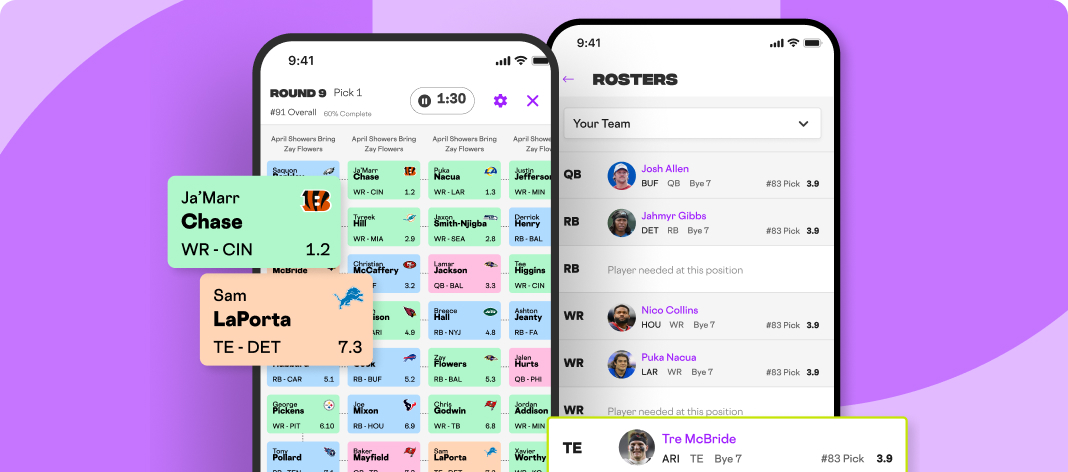A couple weeks ago, Jeff Erickson wrote a piece on exit velocity and spin rate. Last week, I delved deeper into exit velocity. This week, spin rate will be the focus.
Much like exit velocity needs to be considered in tandem with launch angle for maximum benefit, spin rate and spin axis are necessary to get the whole picture. This discussion will be more of a survey piece, dealing mostly with spin rate. For those interested in the physics behind spin rate, spin axis and pitch movement, please read A DEEPER DIVE INTO FASTBALL SPIN RATE and the associated linked pieces posted on DRIVELINE BASEBALL. The bulk of the information referenced on spin rate and axis in the next few paragraphs is from those postings.
It's generally assumed the higher the spin rate, the better. In many instances this is true, but not all. The effect varies between pitch classifications. The average spin rate for different pitches will be examined later.
Big picture, spin rate and spin axis work in concert with gravity to enact pitch movement, both laterally and vertically. Obviously, gravity always acts to pull the ball downward. Spin rate and spin axis affect air pressure and movement, sometime forming a cushion countering gravity, other times acting as a funnel guiding the ball side to side.
Many equate higher spin with greater movement, but the opposite is true with a fastball. The backspin on a four-seam fastball induces a magnus force counteracting gravity, lessening the
A couple weeks ago, Jeff Erickson wrote a piece on exit velocity and spin rate. Last week, I delved deeper into exit velocity. This week, spin rate will be the focus.
Much like exit velocity needs to be considered in tandem with launch angle for maximum benefit, spin rate and spin axis are necessary to get the whole picture. This discussion will be more of a survey piece, dealing mostly with spin rate. For those interested in the physics behind spin rate, spin axis and pitch movement, please read A DEEPER DIVE INTO FASTBALL SPIN RATE and the associated linked pieces posted on DRIVELINE BASEBALL. The bulk of the information referenced on spin rate and axis in the next few paragraphs is from those postings.
It's generally assumed the higher the spin rate, the better. In many instances this is true, but not all. The effect varies between pitch classifications. The average spin rate for different pitches will be examined later.
Big picture, spin rate and spin axis work in concert with gravity to enact pitch movement, both laterally and vertically. Obviously, gravity always acts to pull the ball downward. Spin rate and spin axis affect air pressure and movement, sometime forming a cushion countering gravity, other times acting as a funnel guiding the ball side to side.
Many equate higher spin with greater movement, but the opposite is true with a fastball. The backspin on a four-seam fastball induces a magnus force counteracting gravity, lessening the drop. Intuitively, this should render the pitch easier to hit. However, after seeing fastball after fastball, the brain registers what it believes to be the expected amount of drop and the batter swings accordingly. Therefore, if a pitch doesn't sink as much as expected, the swing path is under the ball, missing it completely or hitting it in the air. Some parochially refer to this as a "rising" fastball, believing the pitch truly rises. Obviously, it doesn't, but the lower than expected downward movement tricks the brain into perceiving the ball is rising.
Pitches benefiting from more downward movement such as splitters and changeups are more effective with less spin to mitigate gravity. The lower the magnus force, the more gravity acts on the ball. In this scenario, the added drop induces batters to hit on top of the ball, beating it into the ground. Of course, the lower velocity also plays with timing, often inducing a swing and miss.
Offerings moving laterally like sliders and curveballs require a higher overall spin rate as well as an axis directing the air currents in such a manner to facilitate sideways movement. When hitters talk about picking up spin, they're looking for the difference in a fastball's backspin with that of a breaking pitch.
With that as a backdrop, here's 2019 league average spin data on common pitches.
| Pitch Type | MPH | Spin | Spin Dir |
|---|---|---|---|
| Curveball | 78.9 | 2519.7 | 25.2 |
| Slider | 84.6 | 2422 | 134 |
| Cutter | 88.3 | 2353.7 | 168.3 |
| Four-seam Fastball | 93.2 | 2262.9 | -168.8 |
| Two-seam fastball | 92.6 | 2194 | -142.6 |
| Sinker | 92 | 2130.4 | -151.5 |
| Changeup | 84.5 | 1812.9 | -143.1 |
| Splitter | 85.4 | 1462.5 | -113.3 |
For point of reference, perfect backspin is -180 degrees. Picture taking a baseball and inserting a rod longitudinally (east-west) exactly through the middle and spin it towards you, that's -180 spin. Now take the imaginary rod and insert it latitudinally (north-south) and spin, that zero degrees. The closer to zero, the closer to perfect sideways spin.
As expected, four-seam fastballs and sinkers register closest to perfect backspin, while the pitches relying on lateral movement are furthest from perfect.
As discussed in the posts on DRIVELINE BASEBALL, there isn't a linear correlation between velocity and spin on four-seam fastball, though higher spin induces more swinging strikes. The manner in which all the factors interact to influence a pitch's trajectory render it impossible to concentrate on any one metric to gauge effectiveness, but in general, spin rate is advantageous for the offerings displaying the higher rates.
Let's put some individual pitchers under the microscope, looking at their pitch mix and spin data.
4Seam% | Slider% | Curve% | Change% | Cutter% | |
| Percent Thrown | 51.5% | 26.2% | 16.9% | 5.2% | 0.2% |
| MPH | 94.5 | 87.5 | 79.3 | 87.3 | 90 |
| Spin rate | 2579.4 | 2627.3 | 2804.9 | 1839.8 | 2594.3 |
| Spin direction | -155.4 | 142.2 | 33 | -118.9 | -174.6 |
It's not surprising Verlander's curve, fastball and slider spin rates blow away league average. Note his changeup's rate is a little above average, which isn't beneficial. It's also the same velocity as his slider, though the spin axis is obviously different. Still, considering Verlander's curve spin rate compared to league average while doing the same with his changeup, it's clear why he throws the curve more.
4Seam% | Slider% | Change% | Curve% | Cutter% | 2Seam% | |
| Percent Thrown | 48.9% | 21.7% | 14.1% | 8.0% | 7.2% | 0.1% |
| MPH | 94.7 | 85.7 | 84.4 | 78.2 | 89.9 | 95.9 |
| Spin rate | 2501.5 | 2356.1 | 1558.4 | 2697.8 | 2448.5 | 2463 |
| Spin direction | -139.3 | 129.6 | -101.5 | 60.6 | -172 | -136.5 |
Scherzer has a similar repertoire as Verlander but uses a different pitch mix. Note how far below average Scherzer's changeup spin rate sits. His respective changeup and curve rates are opposite to Verlander's, supporting Scherzer's use of the change more than the curve.
4Seam% | Change% | 2Seam% | Cutter% | Curve% | Slider% | |
| Percent Thrown | 31.50% | 25.60% | 11.90% | 20.20% | 10.50% | 0.30% |
| MPH | 90.5 | 79.3 | 90 | 86.9 | 72.7 | 79.8 |
| Spin rate | 2092.4 | 1444.7 | 2045.5 | 2063.8 | 2545.3 | 1705.8 |
| Spin direction | 143.8 | 113.1 | 121.8 | -168.8 | -46.3 | 152.8 |
Ryu is super-interesting since he ranks low if the filter is simply average spin rate. However, his curveball is above league average, so he spins it when it counts. On the other hand, his changeup is well below average, resulting in even more drop than normal. Ryu's four-seamer's spin is below average, but that may cause the opposite illusion as a rising fastball. It may drop more than a batter's brain is trained to expect. With so much emphasis on the downward plane, it makes sense Ryu's ground ball rate is 50 percent. This isn't extreme, but it's certainly high and helps limit homers in an era when everyone is trying to loft the horsehide.
Let's do something different with Sale and look at his first five games versus his last five, omitting the middle four where he was transitioning between early and current form.
First Five Starts
Slider% | 4Seam% | Change% | 2Seam% | |
| Percent Thrown | 42.1% | 30.8% | 20.8% | 6.3% |
| MPH | 78.1 | 92.6 | 84.3 | 91.7 |
| Spin rate | 2435.2 | 2280.4 | 1965.8 | 2217.6 |
| Spin direction | -70.5 | 128.5 | 88.8 | 104.3 |
Last Five Starts
Slider% | 4Seam% | Change% | 2Seam% | Curve% | |
| Percent Thrown | 40.4% | 32.8% | 12.1% | 14.5% | 0.2% |
| MPH | 79.3 | 93.9 | 85.7 | 92.1 | 82.9 |
| Spin rate | 2484.2 | 2390.7 | 1896.2 | 2295.5 | 2618 |
| Spin direction | -76.2 | 128 | 88.6 | 102.5 | -75 |
Something not discussed here that's covered in the DRIVELINE BASEBALL posts is every pitcher's delivery (arm slot and release point) is different, exerting varying effects on the baseball. Sale is lanky and uses a slinging delivery, while Scherzer is more compact and over the top. This just exemplifies why there isn't a one-size-fits-all style of analysis.
Keeping that in mind, other than being a southpaw so the spin orientation is opposite, Sale's motion results in a different spin axis for his slider compared to Scherzer and Verlander. This is responsible for the sweeping action and additional movement. As you might expect, horizontal and vertical movement is also measured, adding another layer of analysis. That said, let's collectively crawl before we walk. It's best to get used to the water in the shallow end before doing a triple lindy into the deep end.
Comparing the five-start segments, it's apparent Sale picked up velocity as well as spin on everything but his changeup, which lost spin, as it should to be more effective. Whatever the reason -- a slow spring, a hidden injury, who knows -- it's clear Sale wasn't his usual self to open the season.
To demonstrate another type of analysis, how about we compare Giolito's 2019 performance to last season.
2019
4Seam% | Change% | Slider% | Curve% | 2Seam% | |
| Percent Thrown | 54.50% | 23.90% | 14.40% | 6.70% | 0.40% |
| MPH | 94 | 81.9 | 84.3 | 79.3 | 88.1 |
| Spin rate | 2288.7 | 1601.4 | 2002.3 | 2488.7 | 1962 |
| Spin direction | -157.5 | -135.5 | 147.6 | 21.2 | -137.3 |
2018
| 4Seam% | Change% | Slider% | Curve% | 2Seam% | |
| Percent Thrown | 42.70% | 15.50% | 14.50% | 10.10% | 17.20% |
| MPH | 92.4 | 81.7 | 83.9 | 78.6 | 92.1 |
| Spin rate | 2093.3 | 1648.2 | 2019.8 | 2357.5 | 1988.1 |
| Spin direction | -151.9 | -132 | 124.9 | 30.4 | -126.1 |
Two things stand out. First, Giolito bagged his two-seamer. Again, spin isn't everything, but observe how much lower than average the spin rate was last season. For what it's worth, the average rates on the different pitches are fairly close between last season and this, with a slight uptick in velocity and spin for four-seam fastballs.
Next, Giolito increased usage of his four-seamer and change. Quite impressively, the spin rate on his fastball increased while it lowered on his changeup. Both are in the desirable direction to increase effectiveness.
The take-home lesson here is using this data early in the season to help identify hurlers with tangible skill improvement or loss. That's only part of the analysis, as there's always a question whether the pitcher will maintain his newfound level, but at least there's something concrete to monitor.
Wrap up
Admittedly, there isn't a plethora of actionable information here to help win fantasy leagues this season. That said, it is useful to understand the background on new data, or else it could be misapplied. The truth is, we're barely scratching the surface and factors like command and control weren't even folded in. As someone with a scientific background, I've learned it's best to attack analysis of this nature in a sequential manner. Hopefully you gleaned something from the data.
That said, stay tuned. I have an idea how to put last week's exit velocity discussion and this week's spin rate review to good use, and indeed help manage our clubs to victory over the second half of the season.



























